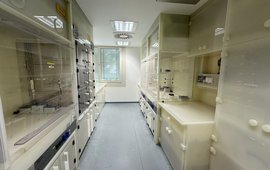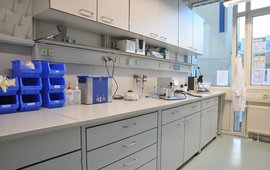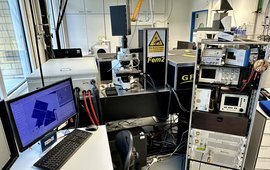The HELGES lab building finished in August 2013 and now more than 200 m² of lab space is available for sample preparation and measurements of cosmogenic nuclides (10Be and 26Al) and stable isotopes of metals and metalloids (currently Li, Mg, Si, Fe, Sr, B) in geological and environmental sample materials, such as sediments, rocks, river water, soils, vegetation.
Two clean labs, class 1000+, with class 10 laminar flow workstations, are available for sample preparation of low concentration samples to avoid contamination in order to obtain accurate measurements. In addition to the clean labs, additional dry and wet chemistry labs provide the necessary equipment for preparation of solid and liquid samples, such as rock crushing, sieving, mineral separation, filtration of water samples, microwave assisted sample dissolution, microscopy and sample preparation for micro-analytical work by laser ablation.
The HELGES lab also accommodates analytical instruments for concentration and isotope ratio measurements on liquid and solid samples. A Thermo Neptune Multicollector Inductively Coupled Plasma Mass Spectrometer (MC-ICP-MS) is used for isotope measurements (Li, Mg, Si, Fe, Sr, B). Concentration measurements are done by Inductively Coupled Plasma Optical Emission Spectrometry (Varian 720 ES ICP-OES). Both ICP instruments can be coupled to an in-house built femtosecond laser ablation system (fsLA-MC-ICP-MS or fsLA-ICP-OES) for in-situ concentration and isotope ratio measurements at the micrometer scale. Nearly all work conducted in the GermanResearchCentre (GFZ) HELGES lab falls into one of two categories: (1) approved collaborative projects that will lead to publications in international scientific journals, and (2) research projects within the GermanResearchCentre (GFZ) Earth Surface Geochemistry group, including development and improvement of analytical methods.














